UL S1001-11 INTEGRATED SYSTEMS TESTING
The safety and protection of lives and property are paramount when it comes to fire protection and life safety systems. In order to ensure the effectiveness of these systems, it is essential to have a comprehensive and standardized testing procedure in place. The CAN/ULC-S1001 Standard for Integrated Systems Testing provides robust guidelines for testing and evaluating the performance of these systems, offering numerous benefits to building owners, occupants, and fire protection professionals alike.
The requirements for the implementation of this standard can be found in the following adopted Canadian standards:
National Fire Code of Canada: 2020
Section 6.8. Integrated Fire Protection and Life Safety Systems
6.8.1.1. Interconnections between fire protection and life safety systems shall be tested and maintained in conformance with CAN/ULC-S1001, “Standard for Integrated Systems Testing of Fire Protection and Life Safety Systems.”
A-6.8.1.1.(1) Building owners must ensure that fire protection and life safety systems and their components (i.e. fire alarm systems, sprinklers, standpipes, smoke control, ventilation, pressurization, door hold-open devices, elevator recalls, smoke and fire shutters and dampers, emergency power, emergency lighting, fire pumps, generators, etc.), including their interconnections with other building systems, are functioning according to the intent of their design. CAN/ULC-S1001, “Standard for Integrated Systems Testing of Fire Protection and Life Safety Systems,” provides the methodology for verifying and documenting that interconnections between building systems satisfy the intent of their design and that the systems function as intended by the Code. Clause 6.1.5 of CAN/ULC-S1001 allows the Integrated Testing Coordinator to accept documented evidence of any tests that have been performed on a system as part of its acceptance testing for the purpose of demonstrating compliance with the integrated testing requirements of that standard, so as to avoid duplication of work.
National Building Code of Canada: 2015
Section 3.2.9. Integrated Fire Protection and Life Safety Systems
3.2.9.1. Where fire protection and life safety systems and systems with fire protection and life safety functions are integrated with each other, they shall be tested as a whole in accordance with CAN/ULC-S1001, “Standard for Integrated Systems Testing of Fire Protection and Life Safety Systems,” to verify that they have been properly integrated.
9.10.1.2. Where life safety and fire protection systems and systems with fire protection and life safety functions are integrated with each other, they shall be tested as a whole in accordance with CAN/ULC-S1001, “Integrated Systems Testing of Fire Protection and Life Safety Systems,” to verify that they have been properly integrated.
A-3.2.9.1.(1) Testing of Fire Protection and Life Safety Systems. Building owners should verify that fire protection and life safety systems and their components (i.e. fire alarm systems, sprinklers, standpipes, smoke control, ventilation, pressurization, door hold-open devices, elevator recalls, smoke and fire shutters and dampers, emergency power, emergency lighting, fire pumps, generators, etc.), including their interconnections with other building systems, are functioning according to the intent of their design. CAN/ULC-S1001, “Integrated Systems Testing of Fire Protection and Life Safety Systems,” provides the methodology for verifying and documenting that interconnections between building systems satisfy the intent of their design and that the systems function as intended by the Code. Clause 6.1.5 of CAN/ULC-S1001 allows the Integrated Testing Coordinator to accept documented evidence of any tests that have been performed on a system as part of its acceptance testing for the purpose of demonstrating compliance with the integrated testing requirements of that standard, so as to avoid duplication of work.
One of the key advantages of adhering to the CAN/ULC-S1001 Standard is the assurance of system functionality, reliability and efficiency. By conducting integrated systems testing, all components of the fire protection and life safety systems are tested in conjunction with one another, allowing for the identification of potential weaknesses or deficiencies. This approach not only ensures the optimal functioning of individual components but also guarantees their seamless integration within the larger system. As a result, building owners can have peace of mind that their systems will effectively respond to emergencies, minimizing damage and enhancing occupant safety.
Furthermore, the CAN/ULC-S1001 Standard establishes a standardized testing process that promotes consistency in evaluating fire protection and life safety systems. With a clear framework in place, fire protection professionals can conduct tests confidently, knowing that they are following industry best practices. This consistency also facilitates accurate documentation and reporting, making it easier for regulatory authorities to review and verify compliance. Ultimately, a standardized testing procedure enhances communication and collaboration among stakeholders, strengthening the overall safety ecosystem.
The CAN/ULC-S1001 Standard promotes a proactive approach to system evaluation and maintenance. Traditional testing methods often examine individual components in isolation, which may not provide a comprehensive assessment of system performance. Conversely, integrated testing evaluates the interaction and collaboration between various subsystems:
Fire Alarm Systems (6.2)
Mass Notification (6.3)
Monitoring System (6.3A)
Elevators (6.4)
Emergency Generators (6.5)
Sprinkler Systems (6.8)
Standpipe Systems (6.9)
Fire Pumps (6.10)
Fixed Fire Suppression Systems (6.14)
Cooking Fire Suppression Systems (6.15)
Hold -Open Devices (6.16)
Electro-Magnetic Locks (6.17)
Smoke Control Systems (6.18)
Contact us to inquire
